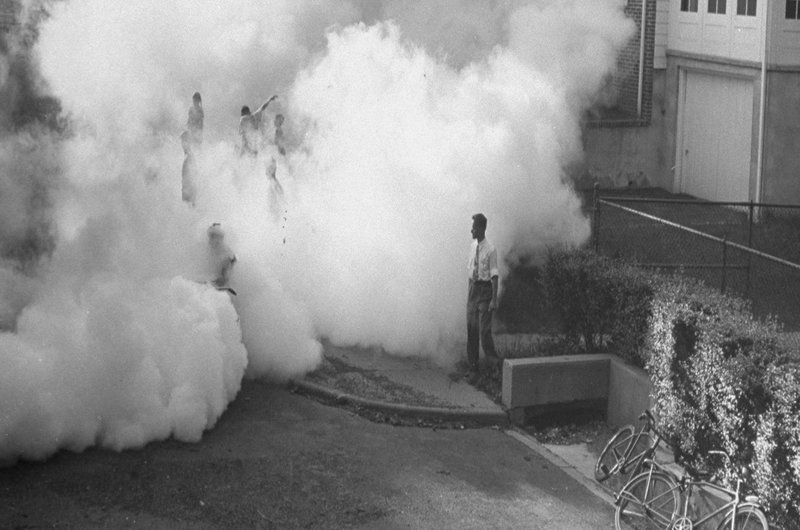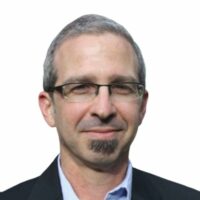I grew up in the Long Island suburbs of New York and have vivid memories of running behind the “fog trucks”. These trucks went through the neighbourhoods spraying DDT for mosquito control until it was banned in 1972, writes David Schlosberg.
I didn’t know it until much later, but that experience, and exposure, was extended due to the pesticide industry’s lies and tactics – what is now labelled “post-truth”.
Rachel Carson published Silent Spring in 1962. It was a beautifully written, if distressing, bit of what we today call “research translation”. The “silent spring” was the impact of DDT as songbird species were killed off.
Carson tried to expose the chemical industry’s disinformation. For doing so, she was roundly and untruthfully attacked as a communist and an opponent of progress. Silent Spring was one of the most popular and vetted overviews of environmental science of all time. Yet lies and bullshit prevented a decent policy response for a decade.
Back in the day DDT was used with nearly no restrictions.
From American Experience/PBS.
And the lies won’t go away. In 2007, one of the think-tanks responsible for climate science misinformation, the Competitive Enterprise Institute, began reiterating one of the main refuted claims about Carson. She was said to be responsible for millions of deaths due to the ban on DDT to control mosquitoes that spread malaria.
The reality is that while DDT was banned for agriculture in the US – and spraying on kids in suburban neighbourhoods – it was never banned for anti-malarial use. Even now. But the political right and the dirtiest chemical industry players in all of industrial capitalism have long painted environmentalists as killers – of people, progress and jobs.
It’s a carefully manufactured campaign of lies and disinformation. As a result, many people believe Carson is a flat-out mass murderer – not a hero who beautifully blended care for human health and nonhuman nature in one of the most important and challenging books of the 20th century.
LIES AND SMEARS HAVE A LONG HISTORY
This anti-environmentalist tactic of countering critiques of industrial impacts on the planet with lies, obfuscation and defamation has a long history. It goes back at least to establishment attacks on the US municipal housekeeping movement in the progressive era of the late 19th and early 20th century.
The urban environmental movement probably began in the 1880s with the Ladies Health Protective Association in New York, the City Beautiful movement, Waring’s White Wings city cleaners, and more.

Internet Archive Book Images/flickr
Municipal housekeeping in particular was primarily a women’s movement to clean up cities. This eventually led to the development of formal offices of public health and public planning in local governments.
The opposition – from meatpackers to fertiliser makers to the waste industry – labelled these women bad housekeepers. They argued that the only reason women wanted to “mother” and keep house in the community was because they were so bad at such things at home – that municipal housekeeping was only a movement against domestic housekeeping.
In other words, they were not real women and were unconcerned with anyone but themselves.
Not surprisingly, the polluting industries were at the heart of such bullshit attacks. And in both this example from the early 20th century and the Carson example from the 1960s, industry used a very gendered attack as part of the post-truth campaign.
The theme of industrial lies covering environmental damage continued in the 1980s in the Pacific Northwest timber wars. Once again, environmentalists were scapegoated for the loss of timber jobs.

USFS/flickr, CC BY
These job losses were primarily due to automation. But the controversy over the endangered spotted owl allowed the timber industry to create another narrative – that environmentalists cared about birds more than jobs, that they wouldn’t be happy until the economy was devastated, and that all of the changes that harmed timber workers were due to environmental regulation – not the industry itself.
The attack on science ramped up then as well. When scientists declared that each pair of owls needed a certain exclusive range, and so protecting them from extinction would entail preserving whole forests, the industry-captured Forest Service simply shrank the recommendation.
The very real environmental science was dismissed. Subsequent policy was based in fantasy, wishful thinking and the lies of the industry. The timber wars were another example of science on the one hand and industry lies – supported by government – on the other.
The history of climate change denialism since the 1980s has really been the culmination of the attack on environmental science.
It has been based on the production of lies developed by the fossil fuel industry through industry-funded conservative think-tanks, laundered through conservative foundations, spun and repeated by right-wing media outlets, and adopted as ideology by the Republican Party. Its representatives are supported by even more industry and conservative funding of elections, or face opposition from others if they don’t comply.
This is, as Riley Dunlap and Aaron McCright have written, a well-funded, highly complex and relatively co-ordinated denial machine. It includes “contrarian scientists, fossil fuel corporations, conservative think tanks, and various front groups”, along with “amateur climate bloggers … public relations firms, astroturf groups, conservative media and pundits, and conservative politicians”.
The goal is simple and clear: no regulation on industry, and what environmental sociologist Robert Brulle calls the “institutionalisation of delay” on climate policy. The tools are simple as well: lies, obfuscation, defamation and the creation of an image of scientific uncertainty.
What is the current state of affairs after 30 years of this climate denial machine?
In the US, at least 180 congressional members and senators are declared climate deniers. They’ve received more than US$82 million in campaign contributions from the fossil fuel industry and its partners.
This is a long, complicated and well-trod story told, among others, by Naomi Oreskes in Merchants of Doubt, and by Michael Mann in The Madhouse Effect. It has been going on a long time.
The history is important, as a problematic front-page story in The New York Times, How GOP Leaders Came to View Climate Change as Fake Science, illustrates. The report includes an explanatory sentence that is jaw-dropping for its misunderstanding and reshaping of the issue:
The Republican Party’s fast journey from debating how to combat human-caused climate change to arguing that it does not exist is a story of big political money, Democratic hubris in the Obama years and a partisan chasm that grew over nine years like a crack in the Antarctic shelf, favouring extreme positions and uncompromising rhetoric over co-operation and conciliation.
So it was “big political money” – not the industry, not the Koch brothers’ campaign, not an all-out effort to shift public opinion, just “political money”. Democratic hubris becomes a central reason for Republicans believing in fake science. The argument is that this was a reaction to President Barack Obama’s regulatory approach in his second term, as if denialism didn’t exist before 2012.
And then there’s the idea that this is a bipartisan problem – of extreme positions and uncompromising rhetoric – rather than one the anti-environmental right created.
Brulle took to Twitter to criticise the story – primarily the short timeframe. Clearly, climate obfuscation doesn’t start in 2008, when The New York Times story starts. The climate change denial machine has been up and running since at least 1988, 20 years longer than the story suggests.
Brulle was also livid that a story on the social aspects of climate discourse did not cite a single expert. This was despite there being hundreds of peer-reviewed articles and books on the denial machine.
@nytclimate Short term perspective that ignores long env. polarization documented in peer reviewed lit. that really started in 90s. pic.twitter.com/EvyA8MnGGb
— Robert Brulle (@RBrulle) June 3, 2017
So even the major media refuse to clearly expose the undermining of real environmental science, and the creation of lies and bribes to distort public policymaking. But this work is out there. It’s really the thorough work done on the climate denial machine that lays out the methodology of the development of environmental distortions, lies and post-truth discourse.
And, again, this is the core example of the evolution of environmental bullshit: a long history of industry creation of lies; conservative funding of think-tanks, front groups and the echo chamber; the development of an ideological imperative of denialism; and then the necessity of completely groundless bullshit to shore up the lies. It’s all there.
This methodology has clearly been used here in Australia. Graham Redfearn, writing for the desmog blog and The Guardian, has done amazing and thorough work on the denial machines in the US and Australia – and their links. In Australia, a clear link exists between climate denialism and the coal industry.
Many on the right, including the current and past prime ministers, parrot the lies and PR language of the industry – energy poverty, coal is cheap, clean coal is possible, 10,000 jobs, etc. It’s a tale as old as tobacco, lead, timber wars and DDT. It’s as old as industries that know their products do public harm, but lie to keep them in use.
The point here is simply to acknowledge what many have argued about the whole idea of “post-truth” – it’s not anything new, but just more of the same.
Environmentalists have long seen the propagation of lies, piles of bullshit, the dismissal of science, and the creation of mythologies as a consistent core of corporate misbehaviour – and, unfortunately, conservative ideology.
Story by David Schlosberg, University of Sydney
This article is part of an ongoing series from the Post-Truth Initiative, a Strategic Research Excellence Initiative at the University of Sydney. The series examines today’s post-truth problem in public discourse: the thriving economy of lies, bullshit and propaganda that threatens rational discourse and policy.
The project brings together scholars of media and communications, government and international relations, physics, philosophy, linguistics, and medicine, and is affiliated with the Sydney Social Sciences and Humanities Advanced Research Centre (SSSHARC), the Sydney Environment Institute and the Sydney Democracy Network.
David Schlosberg, is a Professor of Environmental Politics and Co-Director Sydney Environment Institute at the University of Sydney.

